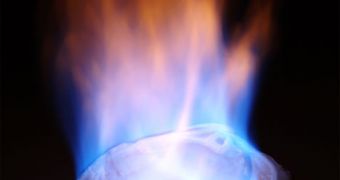But why? Well, there are three big reasons for that. The ethanol is a highly corrosive substance, it has lower energetic value than butanol and, unlike the latter, ethanol also produces a great deal of carbon dioxide gas when burning. Both butanol and ethanol are being routinely used as gas additives, in order to boost the octanic number of gas fuel.
Researchers from Washington University, argue there is no use of ethanol as long as we have butanol, and have been successful in creating a method to convert lignocellulosic materials that are found in plant biomass, containing high quantities of cellulose and lignin, into butanol.
The conversion technique was developed by assistant professor of energy Lars Angenent and uses pre-treated corn fiber that is being digested by cultures of microbes to turn lignocellulosic biomass into butyrate. The pre-treated corn fiber is relatively easy to find since it is a byproduct of the ethanol production process, while butyrate can be processed into butanol through a fermentation stage.
Lignocellulosic materials take time to degrade, they won't just ferment over night; however, USDA researchers, led by Bruce Dien and Michael Cotta, imply the use of several physical and chemical techniques to speed up the process. The key is in creating a mixture of thousands of different microorganisms and in the optimization of the conditions required by them.
Angenent argues that, by implying this specific method, bacterial cultures could in fact process any type of waste in order to turn it into a useful substance. By manipulating the pH of the mix for example, the researching team has proven that they could obtain a number of substances. For example, by keeping the pH neutral, they have been successful in obtaining methane, while when lowering the pH, they obtained butyrate.
Nevertheless, all good things must have some bad aspects as well. Angenent says that the disadvantage of using pure bacterial cultures is that, sooner of later, they would have to pass through a cellular division process which usually generates organisms that contaminate the environment. By using similar techniques, Washington University researchers previously produced electricity and hydrogen gas in wastewater treating processes.

 14 DAY TRIAL //
14 DAY TRIAL //